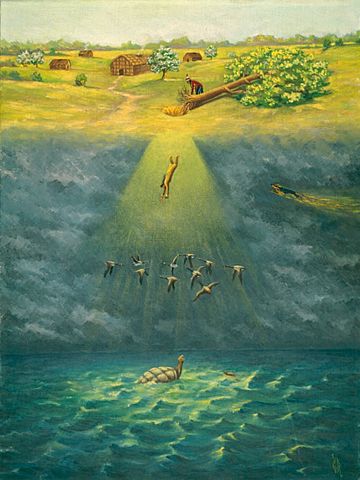Ernest Smith (artist) facts for kids
Ernest Peter Smith (born October 28, 1907 – died February 25, 1975) was an important Native American artist. He was a member of the Tonawanda Seneca Nation. Ernest Smith loved to paint traditional Seneca myths. He also painted scenes from daily life in his Seneca village. In the 1930s, he created many paintings. These artworks showed Seneca life as part of a special art project called the WPA Indian Art Project.
Early Life and Artistic Journey
Ernest Smith was born and grew up on the Tonawanda Reservation. His parents were Louisa Smith and Peter S. Smith. He was the youngest of seven children. Ernest was also a member of the Heron Clan.
As a child, Smith started teaching himself how to draw and paint. He left school early to help his family. He became known as an artist around 1935. This was when a scientist named Arthur C. Parker hired him. Parker wanted Smith to be part of the WPA Indian Arts Project. This project was supported by the Rochester Municipal Museum.
Ernest Smith joined other talented Haudenosaunee artists. These included Jesse Cornplanter and Samford Plummer. Together, they created many artworks for this project. As part of his work, Smith painted a large mural. You can see this mural at the Rochester Museum and Science Center.
Where to See His Art
Ernest Smith's paintings are kept in several important places. These collections help people learn about his art.
- National Museum of the American Indian
- Rochester Museum and Science Center
- National Anthropological Archives of the Smithsonian Institution


